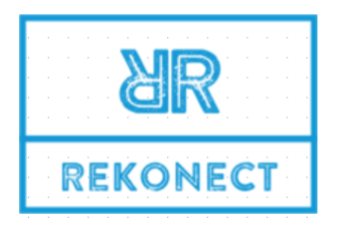A mission statement sits at the heart of every nonprofit, framing the big “why” that guides strategy, culture, and day-to-day choices. Over time, however, even the most eloquent wording can slip out of alignment with reality. As a Forbes article notes, this can be dangerous for any nonprofit.
Programs evolve, community needs shift, and new leaders bring fresh perspectives—all of which can leave a once-perfect sentence feeling cramped or dated. Rather than treat that drift as a problem, see it as proof that your organization is growing and learning.
Scheduled mission check-ups—whether every three years or at natural transitions such as a new strategic plan—turn vague discomfort into productive dialogue. By comparing words to action, asking stakeholders what resonates, and polishing language until it shines, you strengthen internal unity and external credibility.
Most important, you ensure that every dollar raised and every hour volunteered still traces back to a core purpose that feels true today.
When should you start the process? Use the simple cues below as a compass, and if two or more feel familiar it is probably time to reassess:
- Rapid expansion: Programs, regions, or budgets have doubled since the last revision.
- Frequent qualifiers: Staff often say, “We also…” when explaining what you do.
- Stakeholder confusion: Donors or clients mix you up with similar organizations.
- New direction: A recent strategic plan emphasizes activities not named in the current mission.
Evaluate Relevance
Begin the refresh by holding your existing mission up to a mirror and asking whether the reflection matches daily work. Pull recent annual reports, grant applications, and program dashboards onto the table. Side-by-side comparison quickly shows whether initiatives align with the stated purpose or have drifted.
For example, a group founded to “provide adult literacy tutoring” may now also run digital-skills workshops, job-placement services, and policy advocacy, suggesting a broader mission than the original wording implies.
As you compare, pay close attention to outcomes rather than activities. If your written mission promises to “end hunger,” yet most metrics track pounds of food distributed, you may need either more ambitious impact measures or a mission that highlights immediate relief as well as systemic change.
Testing the statement against long-term goals is equally important. A revenue target to triple earned income might be hard to justify if the mission reads as purely charitable, while program growth goals outside your original geographic area could signal that the scope has widened.
Key questions for a relevance audit:
- Does every flagship program clearly advance at least one phrase in the mission?
- Do new or emerging initiatives fit within the same conceptual boundaries?
- Can frontline staff explain how their daily tasks connect to the statement without adding footnotes?
- Do major donors and grantmakers cite the mission when describing why they give?
If the answer to any question is no, you have evidence that the language needs an update, or that certain activities should be reevaluated for alignment.
Gather Feedback
Once you know where gaps exist, invite a cross-section of voices to explore what the mission should say now. Inclusive feedback does more than prevent groupthink; it surfaces language that rings true across cultures, roles, and lived experiences.
Begin with a board-and-leadership session to confirm fiduciary priorities, then broaden the circle to include staff, volunteers, beneficiaries, and donors. Collect insights through a blend of brief surveys, focus groups, and informal listening conversations.
A well-designed stakeholder survey keeps momentum high without overwhelming respondents. Limit it to open-ended prompts that tap into story rather than statistics. Questions such as “What problem do we uniquely solve?” or “What change have you personally witnessed because of our work?” spark narrative responses that later help writers craft mission phrases with emotional resonance.
Meanwhile, focus groups—especially with clients—offer safe spaces for participants to describe impact in their own words, often revealing clearer, more vivid phrasing than internal jargon.
Balance structure with openness by organizing feedback around these core prompts:
- Purpose: What social or environmental need would go unmet if we disappeared tomorrow?
- Distinctiveness: What makes our approach different from that of peer organizations?
- Beneficiaries: Who experiences the greatest benefit from our programs or advocacy?
- Aspiration: Five years from now, what headline would prove we fulfilled our mission?
Synthesize the responses into key themes, and—crucially—share a brief summary with everyone who participated. This simple act of closing the loop builds trust and prepares stakeholders to champion the final wording.
Update for Clarity and Inspiration
Armed with fresh insights, begin drafting. Resist the urge to edit while you write the first version; instead, capture every powerful verb, value, and outcome participants mentioned. Only after the ideas are on paper should you distill them into a single, memorable sentence of around fifteen words. Shorter statements stick in memory, and active verbs such as ignite, empower, or restore convey momentum.
Focus on impact rather than methods. Saying “we provide after-school tutoring” describes an activity, but “we unlock student potential” paints a picture of change.
Balance bold aspiration with credible scale: promising to eradicate global illiteracy may sound grand but can undermine trust if you operate in one city. Finally, test readability by reading the line aloud. If you must pause for breath or reread for sense, it likely needs simplification.
A streamlined drafting checklist helps keep revisions on track:
- Limit jargon and acronyms so newcomers understand at first glance.
- Lead with a strong verb that signals action and energy.
- Name the core beneficiary group or issue area, but keep it broad enough to allow growth.
- Aim for language that staff can weave naturally into conversations and written materials.
Circulate the draft to a small, diverse feedback group for final tweaks. When multiple readers paraphrase the mission in similar ways, you know clarity has landed.
Communicate the Changes
A refreshed mission has power only when people see and use it. Start the rollout with an internal launch that explains the journey—what triggered the reassessment, who contributed, and how the new wording will guide decisions.
Providing concrete examples, such as how upcoming program metrics or fundraising messages will tie directly to the refreshed statement, helps staff move from abstract understanding to practical application.
Board approval should follow quickly to formalize the change and arm trustees with talking points for external conversations. For the broader public, craft a short narrative that pairs the new mission with a real-world story or statistic demonstrating impact. Repetition across multiple channels—website banners, social media, email footers, printed collateral—cements the language in supporters’ minds.
To keep messaging consistent, plan rollout steps in this sequence:
- Internal debut: All-hands meeting, FAQ sheet, and manager discussion guides.
- Board endorsement: Official vote, recorded minutes, and ambassador toolkit.
- Public reveal: Website update, press release, social-media series, and donor email.
- Brand refresh: Replace the mission in grant boilerplates, brochures, slide decks, and staff signatures.
Updating digital assets first ensures that anyone researching your organization encounters the new wording immediately, while printed materials can switch over during normal reprint cycles to avoid waste.
Reinforce and Live the Mission
Embedding the statement in everyday practice keeps it alive long after the launch celebration. Align annual objectives, budget priorities, and performance metrics with the mission’s key verbs and outcomes.
Recruiting offers another opportunity: incorporating mission language into job postings and interview questions attracts candidates who already resonate with your purpose. Staff orientations and volunteer trainings should devote time to unpacking the words in practical terms, perhaps by inviting participants to share stories that exemplify the mission in action.
Regular storytelling rounds out the feedback loop. When newsletters, social-media posts, and impact reports consistently frame successes as proof of the mission, supporters internalize the connection between statement and results.
These stories also serve as real-time tests; if a program’s achievements no longer map to the mission, you either adjust the program or revisit the wording—both healthy forms of accountability.
A concise set of reinforcement practices keeps the mission front and center:
- Review new initiatives against mission alignment before approving budgets.
- Start board meetings with a “mission moment” featuring a client story or data point.
- Weave the statement into donor thank-you calls to remind supporters of shared purpose.
- Integrate mission-based reflection into annual staff evaluations and goal setting.
Conclusion
Reassessing a mission statement does more than polish prose; it recalibrates the organization’s direction, energizes stakeholders, and clarifies value for those you serve. By following a structured process—evaluating relevance, gathering diverse feedback, drafting with precision, communicating widely, and weaving the new wording into daily life—you transform a single sentence into a dynamic compass.
Change may feel disruptive, yet a stale or misaligned mission risks far greater costs: squandered resources, diluted impact, and eroded trust.
If the journey sounds daunting, Rekonect’s directory of mission-development resources can lighten the load. From discovery workbooks and stakeholder-engagement templates to facilitated workshops and rollout playbooks, Rekonect can help nonprofits refresh their North Star without losing momentum on existing programs. Contact Rekonect today to learn more

